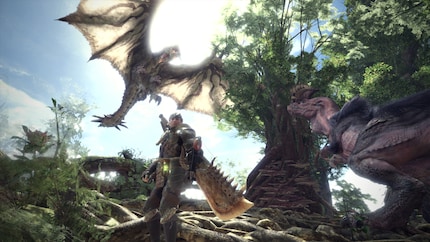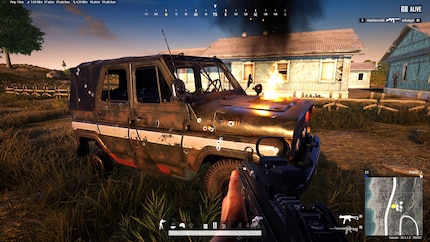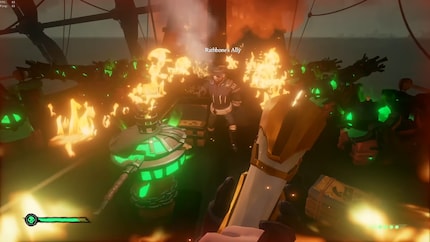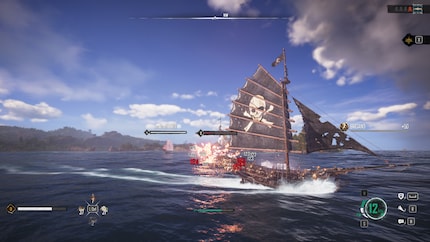
Opinion
7 video game enemies that gave me nightmares
by Domagoj Belancic

How do you display a character’s health in games? The most common solution is uncreative and breaks immersion. Nevertheless, the health bar persists.
The alien monster’s red health bar slowly crumbles away as I fire magazine after magazine into its body. I keep one eye on my own red bar, which shrinks with every enemy attack. If it gets too narrow, I grudgingly pause the game, eat five sandwiches and wash them down with two healing potions.
With my life meter topped up, I turn my attention back to the alien. Well, not exactly. My real enemy isn’t the alien, but the bar above its head. All that matters is that his red meter hits zero before mine. So I don’t actually see much of the fighting.
Experience shows that this distraction from actual game content is unnecessary. If a game does without the in-your-face health bar, I find my own way of understanding how well or badly my opponent is doing.
Monster Hunter, for example, does without a health bar. I keep hacking at a monster until it drops dead, without knowing how much longer that’ll take. But over time I learn to vaguely assess the condition of a monster. This added layer wouldn’t be possible if the game always showed me its health points. It’s a learning process. If my parents hadn’t taken the training wheels off at some point, I still wouldn’t be able to ride a bike today.
Cyberpunk 2077 also has a beautifully implemented mutilation mechanic, which can be seen in the video below. The moment 50 seconds in is particularly cool – an enemy’s arm is injured and rendered useless. He drops his submachine gun and pulls out a handgun with his remaining arm.
Vehicles are particularly suited for showing, not telling, health. The scale classically goes as follows. As the condition of a car deteriorates, its windows break first. The hood then flies off, smoke rises from the engine, it catches fire and finally explodes. This intuitive system lets me know how my vehicle is doing at all times.
The same functionality could be applied to ships. In a sea battle, my cannonballs should tear holes in the enemy’s hull, splinter the railing, puncture sails, topple masts and destroy rudders. If a fire breaks out on the ship, I know it’s about to sink. Sea of Thieves perfectly illustrates this.
The most recent example of this is Skull and Bones – a hit triggers an explosion animation on the enemy ship. But it continues on regardless until the health bar is empty. The enemy ship hardly changes visually.
If there were no health bar, the game would have to signal to me in some other way what condition the enemy is in. Animating falling masts and perforated sails is more complex, but they’d draw my focus back to the actual gameplay instead of a HUD element. After all, an intuitive tangible damage system also promotes immersion. I wouldn’t be battling a status display, but a pirate ship.
As with the minimap, sometimes less is more. We gamers don’t need to be held by the hand all the time. We’ll find a way to beat games, even without a health bar.
My retreats have names like Middle Earth, Skyrim and Azeroth. If I have to part from them due to IRL commitments, their epic soundtracks accompany me through everyday life, to a LAN party or to my D&D session.
This is a subjective opinion of the editorial team. It doesn't necessarily reflect the position of the company.
Show all
In Monster Hunter, you can also chop off a monster’s tail. This doesn’t kill it immediately, but does clearly show it isn’t doing well. I’m a big fan of mutilation mechanics in games. If a zombie is too fast for me, I shoot its legs off. After blowing the arms off a Protektron in Fallout 4, he no longer has a gun and charges at me in kamikaze mode. Not only does this system give me a sense of how dangerous an enemy still is, it also adds an extra facet to the battle.



There are few situations where I find a health bar the best option. In some RPGs, where bosses have several thousand health points, I can understand the bar. On the other hand, Monster Hunter shows that you can do without. In fighting games such as Mortal Kombat or Tekken, on the other hand, the health bar’s too important to leave out – especially in competitive matches. Nevertheless, I’d like to encourage you to question the health bar. Do we really need it? Are there no more exciting alternatives? How much does it distract from game content itself? Do you manage to block it out when you're playing?